Be realistic! You can’t manage it all. Have you ever wondered why your organisation just isn’t rising to the next level or why the changes you implement just don’t have the impact you thought they should? Barriers – that’s what they are. Simply put, these are just obstacles on the course. How you identify them and how you rid yourself of them is the key! Read on.
Optimising your business to suit a dynamic environment is by no means an easy task. As your business grows so does your competition. Customers are more demanding and fickler than ever before. Survival becomes more intense.
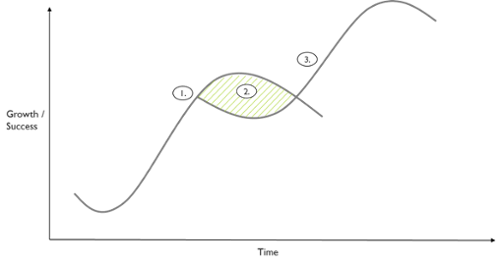
In the illustration above, of growth curves, a business can either follow the first curve and die an impending natural death or make the necessary changes at point 1 to initiate a new growth curve that propels the business to a completely new level! The big challenge here is to continue doing what you’re good at but to also evaluate the need of a change to the way it is done.
Even though the external environment introduces some of these barriers, most of the organisation’s potential lies in the hands of management. In fact, McKinsey Institute showed that whether a company succeeds in a changing environment or not depends 70% on what the company does differently (firm-specific actions compared to peers), and only 30% on the macro economy, industry forces and pure luck. The keys we observe, are execution and change.
The Growth Barriers
Success goes to the organisation that has the ability to see the reality as it stands today, assess the barriers that it faces and break through them in the best and fastest possible way. Anticipation and adaptation are the key words here.
When we talk about barriers, we refer to (for instance) collaboration within teams, the effectiveness between the boss and employees, the interaction and interfaces with clients, the processes and workflow, the way information is processed and communicated, and decisions that are executed.
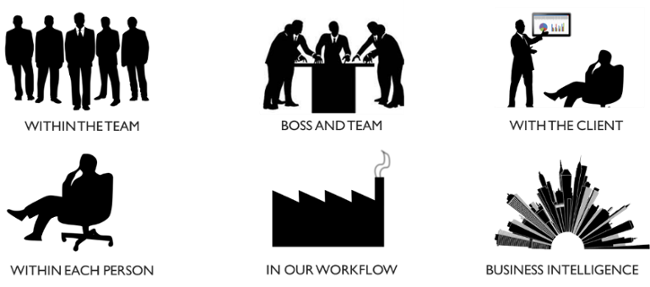
So, the question now is, why do we have these barriers?
The Break-The-Barriers Framework
Is it that the processes and instructions are not clear enough? Or is the information needed incomplete? Or is it that the team does not have the right competence set for the task at hand? Or is it the attitude and behavior that needs correction? Or is the employee’s motivation not 100%?
Our experience is that it is often a combination of some or all of these things.
As you would see in the Break the Barriers framework below, these areas are considered Key Capabilities. Key capabilities affect the slope of the first growth curve.
To work towards continued success over time, an organisation must focus on what we call Accelerating Capabilities. Among these capabilities, are executive responsiveness (Make It Happen), and how quickly the organisation can shift the growth curve (Change). Anticipating change, innovative solutions to respond to this change and the drive to respond to it is what determines how long the organisation will survive. The strength of these accelerating capabilities define the point(s) at which the organisation moves to the next growth curve.
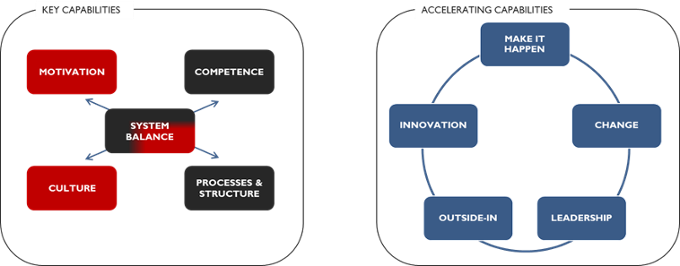
The Break-The-Barriers Assessment
We use this framework to conduct our Break-the-Barriers assessment on the organisation, focusing largely on the critical concerns that management might have. Observations are communicated to key stake holders for action (see the image below). Our assessment can be customized to suit multiple levels, locations, departments etc or the entire organisation as a whole.
On an average, we note that this assessment takes anywhere between 2 to 6 weeks depending naturally on the size of the organisation.
Key capabilities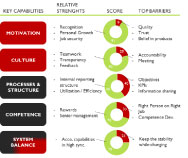
Accelerating capabilities
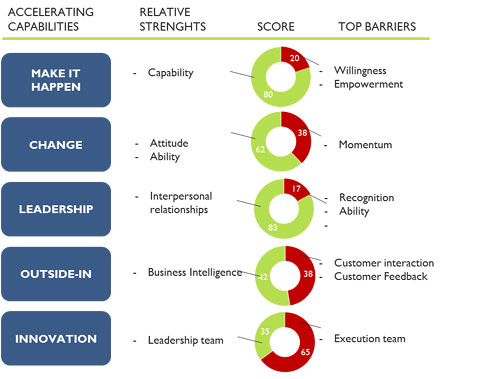
Curious to know more? We would be glad to come by and assess your organization to find its barriers and potentials!

